
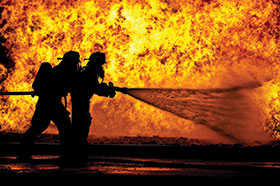
When planning for safety and security risk mitigation, businesses and homeowners often make the mistake of concentrating solely on perimeter security, surveillance and access control. However, one of the critical elements that needs attention is the deployment of appropriate fire detection and suppression technology. In this article, Hi-Tech Security Solutions discusses the selection of adequately regulated fire solutions with a number of industry specialists.
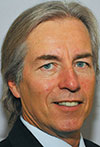
According to Kevin Botha from Xtralis, there are regulations in place which specify minimum levels of fire safety but they are generally concerned with limiting spread and propagation of fire and with minimising damage where possible, and unfortunately only work to the lowest common denominator. In essence, this means that they ensure compliance in terms of minimising the propagation of fire, but don’t make provision for the direct effects of fire on businesses such as consequential losses in terms of the loss of revenue, loss of business, and not being able to meet SLAs (service-level agreements).
An example of these blanket regulations is apparent in the control of sprinklers. While these products provide a degree of fire damage prevention, there is a common misconception that all sprinkler systems are designed to put out fire. In fact, many are designed to control heat release and propagation and are primarily concerned with preventing building collapse. In addition, one would require a large fire to activate the fire sprinklers, during which time fire damage will already have occurred. Furthermore, the sprinklers themselves may cause water damage to the property and movable items, in the process of dampening the flames.
Ideally, Botha adds, early detection and prevention should be the primary concern and solutions should be dependent on the specific application. By employing the services of a reputable and certified fire consultancy or service provider, armed with the necessary skills, end users are guaranteed a greater level of protection from fire.
The best choice of suppression
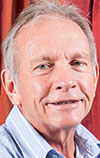
Johan Lombard from Sperosens concurs and says that sprinklers, which are regulated by ASIB (Automatic Sprinkler Inspection Bureau) will not solve all fire risks. He cites the instance of rooms or buildings that contain electrical components, where total flooding would be inappropriate and dangerous. For any fire suppression plan, he suggests starting with a comprehensive risk assessment that includes the kind of material that is likely to catch fire and the architecture of the building. These factors will determine the best choice of suppression medium.
It is advised that clients employ the services of a qualified and certified fire safety engineer to assess and advise on appropriate solutions. The fire engineer should consider all elements of the client’s business operation and provide advice on a solution that will provide maximised protection and minimised downtime in the event of a fire.
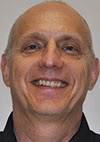
Brett Birch from Technoswitch says that it is now common practise for fire engineering consultants to make use of computer modelling to produce fire scenarios in buildings. This sophisticated methodology can predetermine the movement of smoke in a building, then determine the effect of smoke extractors/ventilation and sprinklers on the dispersal of the smoke. It is also possible to predict the response time of various types of detector technologies.
All of this information can in turn be incorporated into an evacuation model to determine the evacuation times required for the buildings occupants to safely escape the environment. The SANS 0400 building code, specifically Part T, details the fire protection requirements of buildings with regards to specific occupancy categories to ensure appropriate protection of life and/or assets.
Comprehensive risk assessment
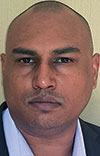
Randhir Seodutt of UTC Climate, Controls & Security says that being fire ready will depend on the results of a comprehensive risk assessment of the site which will typically involve consultation among all stakeholders. Recommendations are generally referenced back to SANS 10139 and include as the minimum, an analogue addressable system, as it accommodates Class A wiring, providing redundancy in the event of one short circuit or open circuit condition.
This system should be integrated into the various fail-safe systems to minimise the spread of fire and the exhausting of smoke and or gas suppression/other extinguishing system activations. Other critical elements include suitably marked up zone and block diagrams at relevant building partitions, suitably trained staff and updated procedures, and suitably qualified and experienced service provider/personnel.
Regulations
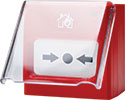
In South Africa, SANS govern product standards. For detection, for example, SANS have adopted EN54 standards.
A good example of what that adoption means for users lies in SANS EN 50054-20 (EN54-20 in Europe) where the products in question (aspirating smoke detection in this case) are tested by European test houses to confirm and validate the products’ and manufacturer’s claimed detection capability. Part 20 – aspirating smoke detectors – specifies the requirements, test methods and performance criteria for aspirating smoke detectors for use in fire detection and fire alarm systems installed in buildings.
One of the key features of EN 54-20 is a new classification system which will enable specifiers, system designers and installers to select the most appropriate sensitivity ASD (aspirating smoke detector) for the intended application.
EN 54-20 is a mandated standard under the Construction Products Directive. It does not cover all aspects of product quality, cost effectiveness and application fit. The EN 54-20 Classes define sensitivity requirements but provide no indication of the area coverage or capability of a particular detector.
Adoption of that standard has introduced a simple classification system to South African users. ASDs are categorised as Classes A, B or C. Class A provides very high sensitivity for the earliest possible warning of smoke in many business, critical, high airflow or high-risk environments. Class B is for enhanced sensitivity for effective early detection in challenging environments or within critical equipment. Class C provides standard sensitivity for general fire detection in normal rooms or inaccessible spaces.
The regulation introduces an holistic knowledge of the best use of products. For instance, a data centre would require a Class A very early warning system to provide earliest possible notification of a potential fire, with a Class B/C capability to manage extinguishing release, whereas a warehouse operator will most likely require a Class C standard sensitivity detection system with a Class B early warning for early intervention. For users this is important because it means that they can clearly specify or develop their fire detection strategy to meet their business need.
Local standards
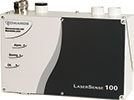
Some products also comply with the American NFPA (National Fire Protection Agency) guidelines. These well-established professional rules provide users with a clear indication of suggested quality and safety features. With regard to portable fire extinguishers, the SAQCC-Fire (South African Quality and Certification Committee) is responsible for determining and implementing the set of standards governing the servicing and use of these products.
In any instance where a product is required to embark on third-party approval, there should be a formal quality management system, such as ISO, in place. Suppliers should ideally be registered with the FDIA (Fire Detection Installers Association) and members should be subjected to an annual inspection of their installations in terms of both national standards and local bylaws.
Furthermore, personnel working on fire detection and suppression systems should be registered with SAQCC-Fire to ensure they are authorised to carry out the required services.
Seodutt points out that standards offer peace of mind in knowing that there is suitable documentation to trace the origination of a particular design and its intended uses, there is a measure of reliability and consistency towards expected performances and future enhancements can be easily tracked.
Non-performance or failure of standardised products can be traced back to a specific point in time, from design to manufacturing and through to distribution. Task- or performance-related items may have a wide range of variances. Therefore, service providers have to know and deal with a large number of product variants which would ultimately impact negatively on service quality. The market is very fierce in terms of skills availability and sustainability, so a service provider may fit and go so the client will be left with a system that could end up becoming useless or inadequate at best.
Fired up technology
There are two predominant fire detection systems on the market used for retail and warehousing applications – optical beam smoke detectors and aspirating smoke detectors.
Optical beam smoke detectors work on the principle of light obscuration, where the presence of smoke blocks some of the light from a transmitter. Once a certain percentage of the transmitted light has been blocked by the smoke, a fire alarm is signalled. Beam smoke detectors provide standard sensitivity (Class C), but are only approved for use in high areas.
Most standard beam smoke detectors make use of infrared light which has definite restrictions since it is unable to differentiate between obscuration caused by actual smoke and obscuration caused by natural building movement (causing misalignment of the beam) and partial obstruction caused by dust or banners hanging in front of the lens, thereby causing false alarms. Some beam detectors make use of both infrared and UV which allows them to distinguish between obscuration caused by non fire events or real smoke from a fire and thus significantly reduce the probability of false alarms.
ASD systems work by continuously drawing air into a distributed pipe network via a high-efficiency aspirator. The air sample is transported to a sophisticated, centrally located smoke detector for accurate analysis. ASD systems typically incorporate multiple, staged alarm thresholds. The alarm thresholds are configurable and can be programmed to levels ranging from thousands of times more sensitive than a conventional detector, to much less sensitive.
ASD systems can provide very early warning of an event, prompting investigation at the earliest smouldering stage of a fire while it can still be easily addressed. ASD systems are immune to the difficulties experienced with beam detectors and are capable of providing an earlier warning of potential fire condition. ASD systems also have a lower cost of ownership since fewer devices are used and they can be placed at a location that is easy to access and which does not result in operational disruption for the user if maintenance is required.
Some proprietary ASDs have a detection chamber that uses the equivalent of 330 000 sensors and sophisticated algorithms for detection and particle classification. The system has multiple stage thresholds and is configurable to be a thousand times more sensitive than the average ASD if the application demands, or less sensitive if the application is less critical.
Early warning allows damage prevention
The ASDs are immune to the interference difficulties experienced with beams and provide a lower cost of ownership as fewer devices are needed. In addition, because the devices can be placed exactly where they are needed, maintenance is not hampered and production is unhindered.
Because fire will always generate smoke and gases, together with high temperature levels, Lombard suggests using a combination of sensing techniques to reduce risk in fire detection. In conjunction with adequate detection technology is the deployment of reliable suppression technology. This includes sprinklers, water mist, condensed aerosol and clean gas.
High-pressure water mist suppresses a fire using fine water mist that is very effective in cooling and dispersing oxygen. For special risk situations such as in data centres, water mist and clean gas are an effective form of fire suppression. This works by replacing the oxygen in a fire situation, either the clean gas itself, or steam generated by the heat of the fire when water mist is forced in. Similarly, low-density water foam is a good solution for the protection of plants and machinery.
In applications such as retail and warehousing, Birch suggests carefully considering the challenging technical issues that arise because of the high ceilings. He explains that smoke becomes heavily diluted in these environments and stratification, a hot air barrier, could prevent the smoke from rising to the ceiling, thereby avoiding detection and also potentially creating an unhealthy and dangerous ambient atmosphere in the lower levels.
With input from a fire engineer, he recommends the careful selection of suitable detection and suppression technology. He also cautions that one needs to factor in the increased installation and maintenance costs in buildings with high ceilings. The use of aspirating smoke detectors are advised since they not only provide early warning without false alarms, but they can be located at an accessible height with pipe networks placed at higher levels.
The bottom line is that clients need to do their homework in terms of what systems and regulations are applicable to each specific problem and application. The employment of a qualified and certified fire engineer to consult on risk assessment and alleviation is considered a good investment.
Hot technology
VESDA-E
Xtralis has recently launched the next generation of VESDA aspirating smoke detection technology. The world’s number one brand of ASD, VESDA-E is a revolutionary development which provides increased sensitivity – up to 15 times greater than current products, three times better dust rejection, up to twice the product longevity, while maintaining its performance characteristics over time, and up to 8% less power consumption per unit area.
Add-on analytics provide unique particle type characterisation capabilities for targeted detection and efficient response while ECO gas detection can take advantage of the installed pipe network to provide early warning of explosive or poisonous gases in the protected space.
OSID (Open Area Smoke Imaging Detection) is another recent development which overcomes the difficulties associated with beam smoke detectors. OSID uses a sophisticated algorithm to map and compare the strength of infrared (IR) and ultraviolet (UV) light signals from detectors configured in the space. An optical imaging array in the OSID imager (receiver) provides the detector with a wide viewing angle to locate and track multiple emitters (transmitters). Consequently, the system can tolerate a much less precise installation and can compensate for the drift caused by natural shifts in building structures.
Verifi
In association with Danfoss-Semco, Sperosens is currently working on various water mist solutions that are certified for use in Europe. In addition the company recently launched a Web-based electronic monitoring system known as Verifi.
One of the biggest problems encountered with regard to fire suppression in large malls is that the systems are often not properly maintained. Sperosens will install a set of sensors that keep tabs on the operational status of fire suppression systems in an effort to increase safety levels. The owner or maintenance manager of the building can easily access the operational readiness of his system on the Internet.
Verifi will report on the operational status of fire pumps and notify the user via email and SMS when there are issues with the pumps. It can also provide early warning if smoke is detected, a critical function since many events are ignored due to a history of repeated false alarms. Verifi will identify false alarm and actual alarm trends and produce a report which enables the user to troubleshoot problem areas.
Verifi also assists with legal compliance on fire hydrants and portable fire extinguishers. Mobile fire extinguishers are subject to monthly pressure and product motility checks. Sperosens places tags onto the extinguishers and uses a tag reader to capture pressure gauge readings and relevant comments, which are then uploaded to the Verifi database. This provides a complete log of all extinguishing equipment, which can be very helpful in the event of insurance claims.
Oryx and Rhino
Technoswitch is replacing its existing conventional fire control panels with the Oryx and Rhino conventional panel range. These panels provide a number of features not normally associated with conventional fire systems such as an event log, field upgradable firmware via USB and dedicated inputs and outputs. The beauty of these products is that they are completely locally designed and manufactured, ensuring that local environmental market conditions are factored in.
To complement the new panel range a new economical conventional detector range, SensoMAG, will also be launched. The range will consist of an optical smoke detector, heat detectors, combined smoke and heat detector and a manual call point.
While the company is mainly focused on fire and smoke detection technology, it also has a range of aerosol suppression products under the Stat-X brand. The success of the Stat-X product line has resulted in an expansion of the fire suppression range with the addition of the BlazeCut automatic suppression T-Series product line.
The BlazeCut T-Series system consists of a heat-sensitive tube made of special plastic with stainless steel fittings on both ends. The tube has both storage and detection capabilities which means that the extinguishing agent is stored directly in the tube and no additional storage device, like a cylinder, is needed.
The system operates automatically independent of any power supply by detecting higher temperatures. When the temperature in the protected enclosure rises to a critical threshold, the detection tube melts down at the point where the affected temperature is the highest. Melting the tube creates a hole, releasing the extinguishing agent stored in the tube onto the source of the fire. These systems are supplied with either HFC-227ea or HFC-236fa clean agents. Typical applications include electrical enclosures or engine compartments of vehicle, machines or pleasure boats.
Series 6000
UTC Climate, Controls & Security has introduced some updates into its current range of fire panels. These panels are able to support more than one protocol, have the option to network both conventional and addressable panels into one system, have built-in Ethernet ports which allow the panel to be remotely monitored, and connect to building management systems that support the Bacnet and Modbus protocol. For difficult locations, wireless solutions are seamlessly integrated. In line with current trends, there is also a mobile app for these fire panels, making maintenance even easier.
For special detection applications, next to ASD, UTC offers also recently launched an extensive range of linear heat detection cables and controllers, both digital and analogue. The mining and O.P.G industry is just one of the examples were this would be a perfect fit for purpose.
The EN54-23 standard which was recently introduced, has also meant a completely new range of visual alarm devices, in line with a drive to provide notifications for the hearing impaired community. The industry needed to safely address an EH&S issue in loud environments and the old type beacons were in many cases inconsistent and inadequate for their purpose. Manufacturers are required to state the coverage volume to achieve a minimum of 0.4 lumens/m² (lux) on every part of the floor and the rate of flash is limited to between 0.5 Hz (once every 2 seconds) and 2 Hz (twice every 1 second) and only red or white flashes should be used.
Security integration is no longer limited to mid and high-end segments, and with UTC’s Lenel and ATS software options, the company is able to offer cross-technology integration. UTC also recently launched a new IP67 Series 6000 range of heat detectors which can be used on any conventional fire panel zone as well as addressable zone monitoring units. Heat detectors are normally used in rooms where the temperature can be expected to rise rapidly in case of a fire, or in places where smoke detectors cannot be used. The 6000 range is specifically designed for outdoor use, but is also suitable for indoor use in high humidity areas or areas requiring regular cleaning.
For more information contact:
Sperosens, 086 177 3767, marihette.hattingh@spero.co.za, www.spero.co.za
Technoswitch, +27 (0)11 794 9144, info@technoswitch.co.za, www.technoswitch.co.za
UTC Fire & Security, +27 (0)11 579 7300, utcfs.ssa@fs.utc.com, www.utcfireandsecurity.com
Xtralis, +27 (0)82 316 2601, dwaddell@Xtralis.com, www.xtralis.com
| Tel: | +27 12 665 0317 |
| Email: | info@spero.co.za |
| www: | www.spero.co.za |
| Articles: | More information and articles about Spero Sensors & Instruments |
| Tel: | +27 11 794 9144 |
| Email: | info@technoswitch.co.za |
| www: | www.technoswitch.co.za |
| Articles: | More information and articles about Technoswitch Fire Detection & Suppression |

© Technews Publishing (Pty) Ltd. | All Rights Reserved.